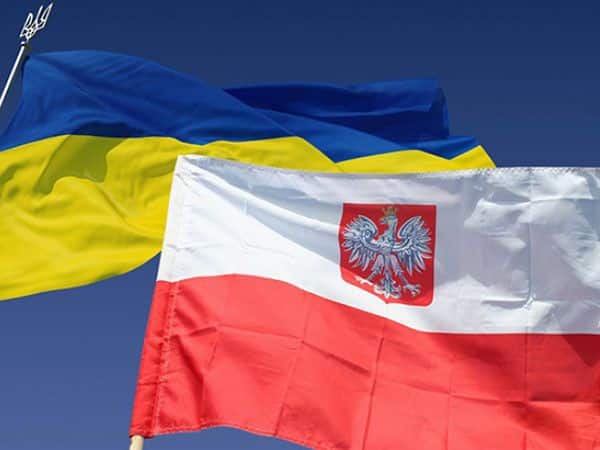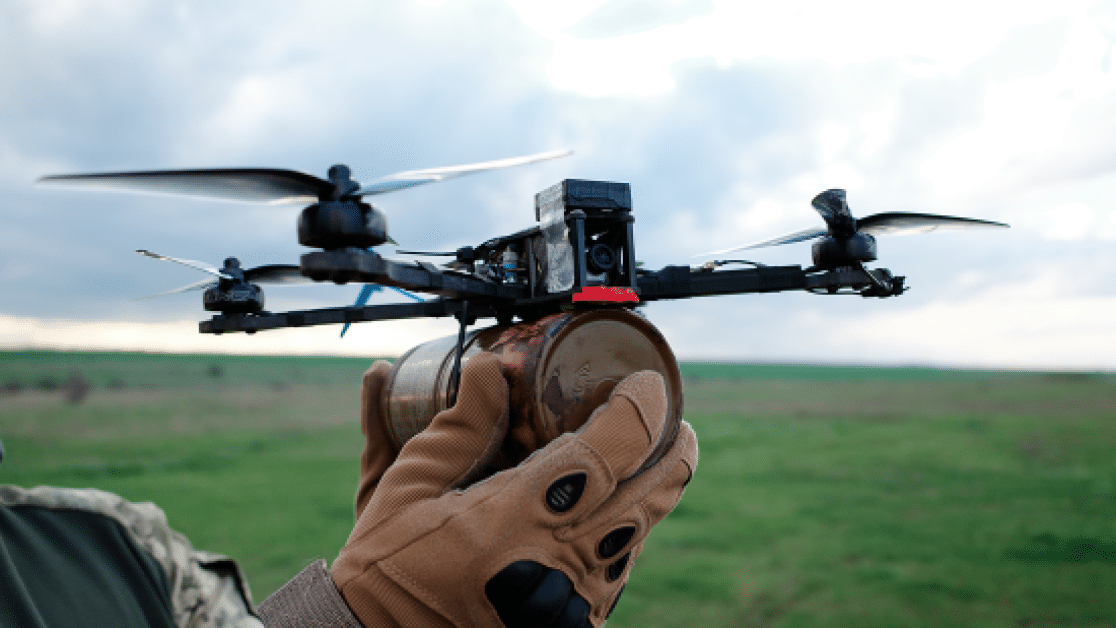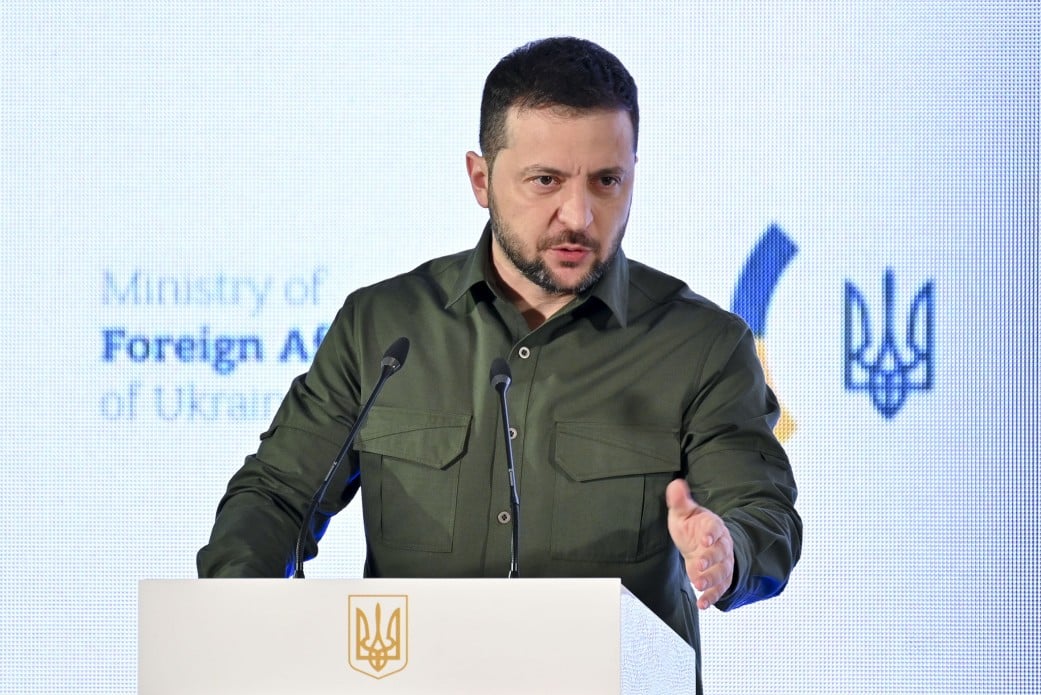Table of Contents
What drones are used by the Ukrainian Armed Forces, what the government and businesses are doing to scale up production and procurement of UAVs, and how drones have become a key component of 21st-century warfare — read more in the material by RBC-Ukraine.
In October 2021, Ukrainian military personnel used the Turkish drone Bayraktar on the battlefield for the first time, destroying terrorists’ artillery. Everyone was talking about Turkish drones from the beginning of the full-scale invasion — during the initial months of the full-scale war, funds were even raised by the Polish to purchase Bayraktar drones for the Ukrainian army. The drone was considered highly effective in combating the enemy.
A year after the first use of the Turkish Bayraktar, in September 2022, Russians used the Iranian Shahed drone for the first time, directing it towards the Mykolaiv region. Since then, Iranian UAVs, which Russians named Geran, have become an integral part of shelling across the entire territory of Ukraine, and the whole world has seen how drones can alter the course of warfare.
War of technologies
In the battles against Russian troops, Ukrainian military personnel use several types of drones — reconnaissance UAVs, kamikaze drones, and combat UAVs. In the current realities of warfare, the spectrum of drone usage has significantly expanded, according to Yaroslav Oliynyk, the advisor to the Minister for Strategic Industries.
“Last year’s battles were very challenging, the situation was constantly changing, the frontlines were dynamic, and people were being lost, including those who were wounded and concussed. Now, with the help of drones, they are located, medical supplies and rations are airdropped to them to reestablish communication and guide them on where to move,” Oliynyk noted in a comment to RBC-Ukraine.
Drones have greatly eased military tasks. Just a few decades ago, an artillery spotter would have had to ascend to elevated terrain, set up a compass, and use it to adjust artillery fire. Meanwhile, scouts would be physically crossing the frontlines to estimate enemy troops and equipment numbers. Nowadays, drones and UAV operators handle all of these tasks.
Using UAVs, military personnel also destroy equipment and enemy personnel, provide assistance to their comrades, and even take prisoners, as explained by airborne reconnaissance soldier Andriy Otchenash.
“I operate FPV and Mavic-type drones. Currently, UAVs are divided into two types — long-range and short-range. Long-range UAVs include fixed-wing aircraft, which can fly for hundreds of kilometers. There are those that conduct local reconnaissance,” notes Otchenash.
In the initial months of the full-scale invasion, society knew what a Bayraktar was, but hardly anyone could name 5-10 other drones. However, a variety of UAVs were needed, and the military, along with volunteers, consistently emphasized this need. Ukrainian manufacturers developed their own drones — Kazhan, Vampir, Leleka, octocopter R-18, Punisher, COBRA, RAM II UAV. But drones were not produced and still aren’t being produced in the quantities that would meet the army’s demand.
“We need a large number of drones. We need reconnaissance drones, we need bomber drones, we need FPV drones, including kamikaze drones. Today, in the realm of copters, Russians have made significant progress compared to us,” says Andriy Otchenash.
Volunteers and businessmen have actively engaged in the procurement of various drones to supply the Ukrainian Armed Forces. The Mavic drone from the Chinese company DJI gained particular popularity. Like other relatively affordable reconnaissance drones, it is, apparently, meant to be considered as expendable equipment, but for such “wastefulness,” the availability of Chinese Mavic drones is still quite limited.
Due to the high demand for Mavic drones by the end of 2022, a scandal even erupted — Defense Minister Oleksii Reznikov, in response to complaints from volunteers, referred to the Chinese UAVs as “wedding drones.” Later, the ministry clarified that the minister understood the front’s need for Mavic drones, but the drones themselves were not being procured by the state due to the reluctance to strain relations with the United States.
The legal framework under which manufacturers operated at the time of Russia’s invasion did not facilitate either business development or scaling up. Companies found themselves in a situation where any of their steps were either taxed or prolonged in time, or were unprofitable. One of the most striking examples was the provision regarding the maximum allowable profit when producing drones with imported components — no more than 1%. This is despite the fact that in a Ukrainian drone, 90% of the components are foreign, notes Vitaliy Kolesnichenko, the director of the manufacturing company Airlogix.
“We have no problem finding components abroad, and there’s nothing available in Ukraine. Everything is from abroad — all materials, all components, all electronics. If it is purchased in Ukraine, it was previously bought from abroad. We only produce the casings in Ukraine,” Kolesnichenko points out in a comment to RBC-Ukraine.
Within the confines of this maximum profit limit, manufacturers earned very little from selling their products. If there’s no profit, there’s no expansion of production, development, investors, or financial motivation, says another interviewee of RBC-Ukraine in this field.
“The 1% was there because, when you’re working with the government, you’re not allowed to make money. How is it possible, you’re working with the government, how could you possibly earn anything from the government, that’s immoral. Of course, that’s sarcasm, but that’s how the state positioned itself. By the way, now this is happening with everything that doesn’t involve drones. If we’re talking about technological systems, ELINT, EW, air defense systems — you can only work with 1% on components,” notes the manufacturer, who preferred not to disclose his name in the publication.
See also: Drone warfare: what kind of kamikaze drones are used by Ukraine and Russia?
Importing components used to be subject to value-added tax (VAT) as well, and the entire process from drone production to putting it into operation took about two years due to the numerous permits required. In other words, manufacturing UAVs in Ukraine was unprofitable and cumbersome, even considering how essential drones are for the army. All this bureaucracy has led to the fact that currently only 10% of the drones used by the Ukrainian Armed Forces are domestically produced, while 90% are imported.
De-bureaucratization
Only from the beginning of 2023 changes take place in the regulatory documents regarding UAV production. Amendments were introduced in a Cabinet of Ministers resolution, shortening the timeframe for putting new drones into operation from two years to 3-5 weeks. The most essential documents among the permits were left in a comprehensive package. Import from Poland was simplified, and value-added tax (VAT) and import duties on components were abolished.
However, perhaps the most significant change for manufacturers was the increase in allowable profit from 1% to 25%. For Ukrainian companies, this step became a “magic wand,” as Kolesnichenko calls it.
“Besides the obvious motivation, we now have a business motivation to work, reinvest, improve, innovate, and make money. Now everyone sees that this is not just a story about breaking even and working at zero, it has potential,” Kolesnichenko noted.
After the introduced changes, Airlogix, which produces reconnaissance drones, started negotiations with foreign investors. By signing a contract with the Ministry of Defense for UAV production, the company will be able to grow.
“Investors are ready to put money in. These are indirect investments, but it’s money that goes into Ukraine,” Kolesnichenko added.
One of the driving forces behind initiatives in the field, as acknowledged by the manufacturers themselves, has been the Ministry of Digital Transformation and its project Army of Drones. Today, hundreds of Ukrainian companies are ready to manufacture drones, according to Mykhailo Fedorov, the Minister of Digital Transformation.
“Together with UNITED24 and the state program, the majority of contracted drones are of Ukrainian production, such as Vampir, Kazhan, R-18, and many others, whose names I’d prefer not to disclose. In total, there are about 200 Ukrainian companies producing UAVs as of today,” Fedorov noted in a comment to RBC-Ukraine.
According to the manufacturers, the entire process from ordering a drone to its appearance on the frontlines now takes about three months. However, this pertains to situations where volunteers procure drones, as they do it based on specific needs. When it comes to the state, the timelines might extend, and drones could spend some time in storage.
Volunteers themselves often seek drones from abroad. According to Bohdan Ostapchuk, the head of the Military Department at the Serhiy Prytula Foundation, the state’s requirements are fairly objective, but there are some problems. The purchase process doesn’t follow a simple “money-goods” scheme. The retailer, meaning the retail company, also needs to provide its founding documents.
“There have been comical situations when contractors had to spend several days searching for a wet seal that they forgot about right after receiving it and never used, because Western companies don’t work like that. Here, they want to buy, but they also need to prepare some documents. With old partners, it’s already clear, but with new ones, you have to go through all of this,” Ostapchuk notes.
Both local manufacturers and large volunteer organizations speak positively about the current changes. However, the processes that weren’t initiated for 30 years, although needed today, are hardly timely. Changes to the Cabinet resolution on import duties were made only in February 2023, and the increase in allowable profit from 1% to 25% was implemented in March. Meanwhile, the full-scale invasion has been ongoing for over a year and a half, and the war has lasted for nine years.
“There will be enough drones only when Ukraine stands at the borders of 1991 for at least 10 years. That’s why we continue to do everything possible to have more drones on the frontlines,” noted Fedorov.
Iranian-Chinese technologies in Russia’s arsenal
While Ukrainian volunteers and manufacturers seek opportunities to procure and produce a maximum number of drones, the Kremlin leverages established connections. According to the Washington Post, Russia plans to manufacture around six thousand Shahed drones within the Alabuga Special Economic Zone in Tatarstan by 2025. Ukrainian military intelligence data indicates that in the latter half of this year alone, Russians plan to release about 1300 Shahed drones.
China actively assists Russia with drones, as suggested by Politico. According to its information, Russia imported drones from China worth $100 million, which is 30 times more than what was imported from China to Ukraine. Sanctions imposed on Russia may slow down the production and acquisition of new technologies, but they do not completely halt it.
“Russia is a country of thugs; they can steal, snatch, and simply copy. Sanctions are already imposed on them. But we can’t do that; we are a civilized, democratic state,” says Yaroslav Oliynyk.
The cooperation between Beijing and Moscow leaves a noticeable impact on the market for Mavic drones. Ukrainian volunteers admit that it’s challenging to purchase a large number of drones from retailers. According to unconfirmed information, China may restrict shipments, particularly to Eastern Europe.
“It’s an indirect, unofficial policy. You can’t say it’s explicitly stated by the Communist Party. But we all know that it’s what the Communist Party said. Instead of sending 10 thousand drones to some retailer, they will send batches of a thousand drones to different places,” mentioned one of the interlocutors.
For this reason, Ukrainian manufacturers today try not to depend on China and seek necessary components in Europe or the United States to avoid becoming hostages to Chinese suppliers in the future.
By acquiring relatively inexpensive combat drones from Iran and a large number of reconnaissance UAVs from China, Russia is clearly leading in the “drone race” today.
“We need to be honest with ourselves, Russia is a formidable opponent; it also has skilled engineers, companies, and a defense-industrial complex. We shouldn’t underestimate them, but we shouldn’t fall into panic either: ‘Oh, it’s all lost, Russians are using Mavic drones, FPVs, Shahed drones, and we’re not doing any of this,'” notes Ostapchuk.
Viewing the situation with UAVs in Ukraine solely from a critical perspective is also incorrect, say the sources interviewed by the publication, who are engaged in drone procurement and production. An important indicator is the increasing frequency of drone strikes hitting Russia itself. The initial attacks on central Moscow surprised both Ukrainians and the West, but today, these strikes have become regular occurrences. This also applies to the attacks by underwater drones on the Crimean Bridge.
All of this indicates that drones are no longer just aiding in safeguarding the lives of Ukrainian soldiers. Equally important is their potential to effectively demonstrate the proximity of the war even to Russians. Even strikes in Moscow that might seem insignificant in terms of battlefield achievements can have a powerful psychological impact. Sirens, explosions, and sleepless nights may prompt residents of Russia to view the actions of their own government in a different light.
Ukraine’s war against Russian troops is a field where many things are happening for the first time. Primarily on the Ukrainian front, they employ technology that has not been used in combat before. This technology is altering the course of the battle, and drones are one of the key components of 21st-century warfare.
Originally posted by Yuliia Akymova on RBC-Ukraine. Translated and edited by the UaPosition – Ukrainian news and analytics website




